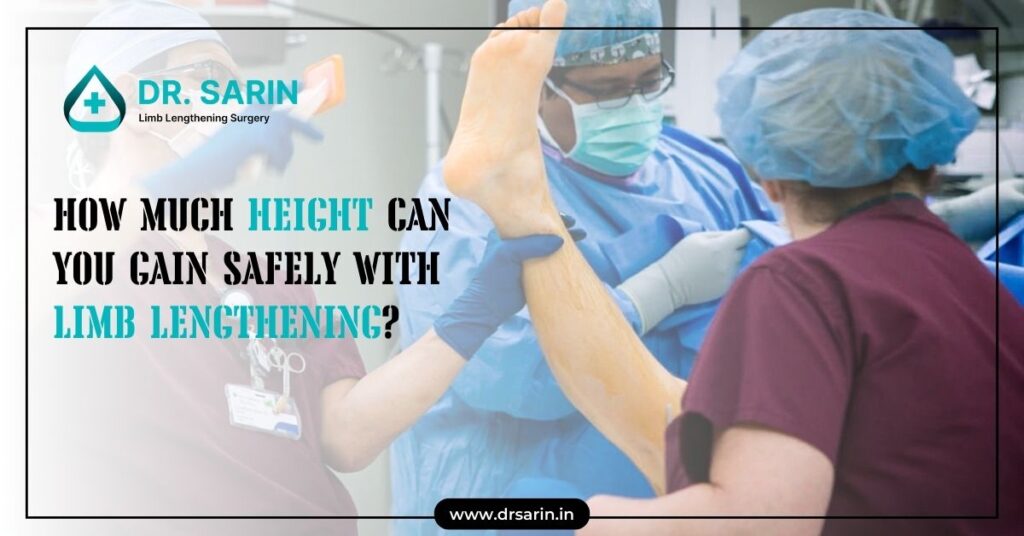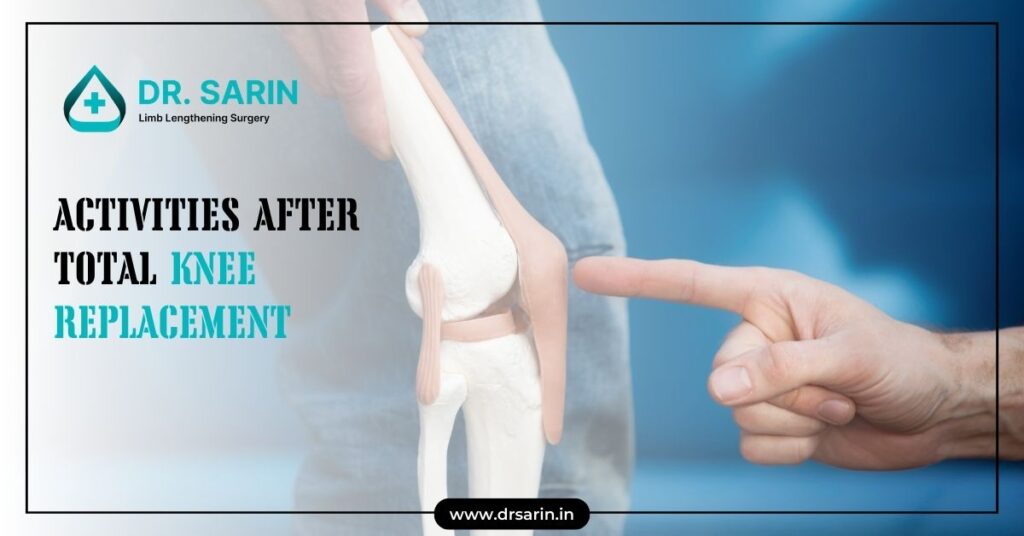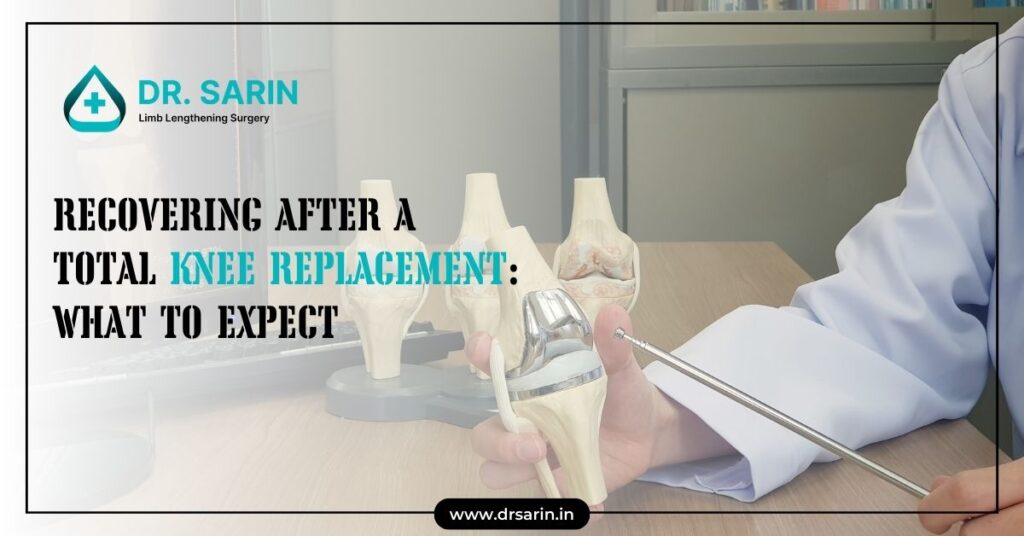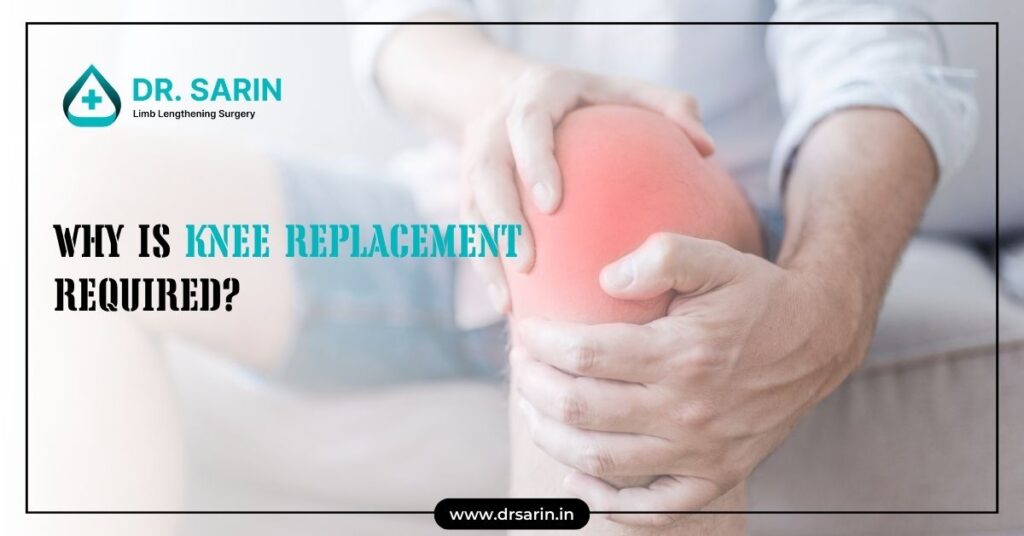Average Height Across India 2024 by Select City

Height is a key indicator of general health, nutrition, and overall well-being, varying across different cities and regions in India. This article explores the Indian average height across various cities in 2024, analyzing the trends and factors influencing these differences. Such data provides valuable insights into India’s lifestyle, genetics, and nutrition trends. Average Height in India: National Overview On a national level, the average height in India has shown gradual increases over the past decades. While genetics play a significant role in determining height, socioeconomic factors, access to healthcare, and dietary habits also have substantial impacts. As of 2024, the average height for males and females in India is approximately: Men: 5 feet 5 inches (165 cm) Women: 5 feet (152 cm) However, these figures can fluctuate widely depending on specific urban and rural settings. Factors Influencing Height Variation in India Height is influenced by a combination of genetic and environmental factors. In India, socioeconomic status, dietary diversity, and healthcare access all contribute significantly to height variations. Key influences include: City-Wise Analysis of Average Heights in India (2024) 1. New Delhi In the capital city, a diverse population and relatively high standard of living contribute to a higher-than-average height. However, factors like pollution may hinder optimal growth. In 2024, average heights are: Men: 5 feet 6 inches (168 cm) Women: 5 feet 1 inch (155 cm) 2. Mumbai Mumbai, known for its bustling urban life, has a mixed demographic, with people from various socioeconomic backgrounds. Access to nutritious food is more widespread, though stress and pollution remain concerns. Men: 5 feet 5 inches (165 cm) Women: 5 feet (152 cm) 3. Chennai Chennai’s population sees slightly lower average heights, partly due to dietary habits and regional genetics. The tropical climate and diet rich in rice and less protein might impact height trends. Men: 5 feet 4 inches (163 cm) Women: 4 feet 11 inches (150 cm) 4. Kolkata With a strong cultural emphasis on a carb-heavy diet, the population in Kolkata tends to have shorter average heights. The city’s lifestyle, dietary habits, and genetics contribute to this trend. Men: 5 feet 4.5 inches (164 cm) Women: 4 feet 11 inches (150 cm) 5. Bengaluru Known for its tech industry and youthful demographic, Bengaluru’s average height is slightly higher due to access to varied diets and healthcare. Men: 5 feet 5.5 inches (166 cm) Women: 5 feet (152 cm) 6. Ahmedabad Ahmedabad shows moderate height averages. While the diet is generally nutritious, it is high in carbohydrates and fats, which may influence growth. Men: 5 feet 5 inches (165 cm) Women: 5 feet (152 cm) Rural vs. Urban Height Trends There’s a clear distinction in average height between urban and rural areas. Urban residents tend to be taller due to better healthcare facilities and balanced diets. Conversely, rural areas, especially those with limited access to nutritious food, report lower averages. Bridging this gap remains essential for enhancing health equity. How Socioeconomic Conditions Affect Average Heights Socioeconomic conditions are one of the biggest factors influencing height. Areas with higher income levels and better infrastructure offer more resources for health and well-being. In cities, access to fortified foods, regular medical check-ups, and adequate housing contribute to better growth outcomes in children and adolescents. Comparison with Global Averages When compared internationally, India’s average height is still below the global average. Countries with advanced healthcare systems and higher protein intake generally have taller populations. Analyzing these differences highlights the importance of healthcare and nutritional investments in raising the national average. Conclusion While genetics set a base, lifestyle, nutrition, and healthcare largely determine the actual growth of individuals across different regions. India can work towards a higher average height by increasing awareness of balanced diets and improving healthcare access, especially in rural and low-income urban areas. The study of Indian average height by city sheds light on how public health initiatives can continue to improve nationwide.
How Much Height Can You Gain Safely with Limb Lengthening?

The surgery has become famous for those looking to increase their height. This procedure involves surgically lengthening the bones in the legs, allowing individuals to grow taller over time. But how much height can you safely gain through this process? It can typically add 2 to 3 inches (5 to 8 cm) of height in one procedure. However, with multiple surgeries, some people have achieved an increase of up to 6 inches (15 cm). It’s important to note that the height gained depends on the patient’s body and bone health. Height increase surgery is a complex procedure that requires significant recovery time. The process involves gradually stretching the bones using an external device, encouraging bone growth. While surgery is generally safe when performed by a qualified surgeon, patients must be mindful of potential risks, such as infection, nerve damage, or prolonged recovery. Limb surgery can be a safe and effective way to increase height, with typical gains ranging from 2 to 6 inches. Consulting with a surgeon and understanding the potential risks are essential steps for anyone considering this procedure.
Indian children may no longer outgrow parents

For years, it has been common for children to grow taller than their parents, especially in countries where living conditions, nutrition, and healthcare have improved. However, recent studies suggest this trend may slow down in India. Indian children, who were once expected to surpass their parents in height, may no longer follow this pattern. The factors behind this stagnation in height are complex, involving nutrition, healthcare, socio-economic disparities, and lifestyle changes. Key Factors Behind Height Stagnation in India 1. Malnutrition Malnutrition remains a major obstacle to growth in India. Even though the country has made significant strides in food production, a large portion of the population, particularly in rural areas, still lacks access to nutritious food. The lack of essential nutrients such as vitamins, minerals, and proteins during critical growth can lead to stunted growth. Children who do not receive proper nutrition during their early years may not reach their full potential. 2. Socio-economic Disparities Economic inequality is another significant factor. Children from low-income families often face higher risks of stunted growth due to limited access to healthcare, clean water, and proper sanitation. In contrast, children from wealthier families in urban areas may experience better growth due to improved living conditions. This socio-economic divide results in many Indian children falling short of their potential height. 3. Changing Diets The modern Indian diet, particularly in urban areas, is shifting towards high-calorie, low-nutrient foods. The increasing consumption of processed and fast foods, high in unhealthy fats and sugars, contributes to poor health outcomes. These dietary changes are not providing the necessary nutrients for children’s growth and may be playing a role in the height stagnation seen across the country. 4. Healthcare and Sanitation Frequent Illnesses, especially in areas with inadequate sanitation, also affect physical development. Diseases such as diarrhea, prevalent in regions with poor water quality, can prevent the absorption of essential nutrients. As a result, children in these areas are more likely to experience growth disruptions, further contributing to the height stagnation trend. How Does the Indian Average Height Compare Globally? The Indian Average Height for men is about 5’5″ (165 cm), and for women, it’s around 5’0″ (152 cm). These averages are lower than in many Western and East Asian countries. This difference is often attributed to factors like malnutrition, limited access to healthcare, and the impact of socio-economic conditions. While some improvement is seen in urban areas, particularly among younger generations, the overall trend remains concerning. What Can Be Done? Addressing the issue of height stagnation requires a multifaceted approach, including: Conclusion While the trend of children outgrowing their parents has been common in many countries, India is witnessing a potential stagnation in height. Factors like malnutrition, socio-economic disparities, changing diets, and limited access to healthcare are contributing to this issue. Addressing these challenges is critical to ensuring that future generations in India can reach their full physical potential and experience improved overall health.
What’s The Average Height Per Country?

Height is one of the most visible traits that vary across populations globally. Multiple factors can influence it, including genetics, environment, nutrition, and healthcare. Countries exhibit different average heights, which can also reflect historical changes in living conditions. Over the years, numerous studies on the average height of individuals in various countries have revealed interesting global trends and differences. Factors Influencing Average Height Before we dive into the numbers, it’s essential to understand the factors influencing average height. The most prominent factors include: Average Height Across Various Countries Let’s explore the average height in different parts of the world: 1. India India is one of the most populous countries in the world, and its average height reflects its diverse genetics and varying access to nutrition. The Indian average height for men is approximately 5’5″ (165 cm), and for women, it is around 5’0″ (152 cm). Various studies suggest that while genetics play a role, factors such as malnutrition, socio-economic disparities, and healthcare access contribute to the lower average height compared to Western countries. However, in urban areas where diets are improving, the younger generations are showing slight increases in height. 2. The Netherlands The Dutch are among the tallest people in the world. The average height for men is approximately 6 feet (183 cm), while women stand at an average height of around 5’7″ (170 cm). Various studies have shown that genetics and a rich, dairy-heavy diet contribute to their taller-than-average stature. 3. Denmark Like the Netherlands, Denmark also ranks among the countries with the tallest people. The average height for Danish men is about 5’11” (181 cm), and for women, it’s about 5’7″ (169 cm). The high standard of living and access to healthcare and nutritious food are primary contributors to their average height. 4. United States In the U.S., the average height for men is about 5’9″ (175 cm), while for women, it’s around 5’4″ (162 cm). Although Americans were once among the tallest populations globally, their average height has remained relatively stagnant over the last few decades, possibly due to increased obesity and other lifestyle-related health issues. 5. Japan Japan has a shorter average height compared to Western nations. The average height for Japanese men is about 5’7″ (170 cm), and for women, it’s approximately 5’2″ (158 cm). The traditional Japanese diet, rich in vegetables and fish but low in dairy, has contributed to their shorter stature. However, with changing diets and improved nutrition, younger generations in Japan are showing increases in height. 6. Brazil In Brazil, the average height is around 5’8″ (173 cm) for men and 5’3″ (160 cm) for women. Brazil’s ethnic diversity, which includes a mix of European, African, and indigenous ancestry, results in a broad range of heights across the population. 7. China In China, the average height for men is around 5’7″ (170 cm), and for women, it’s about 5’3″ (160 cm). Like India, China’s rapid urbanization and economic development have led to improved access to nutrition and healthcare, increasing average height, particularly among the younger population. 8. South Africa South Africa, known for its diverse population, has an average height of around 5’7″ (170 cm) for men and 5’2″ (158 cm) for women. The population’s mixed ancestry and varying socio-economic conditions contribute to these averages. 9. Australia In Australia, the average height for men is about 5’10” (178 cm), and for women, it’s around 5’6″ (164 cm). With access to good healthcare, nutritious food, and active lifestyles, Australians rank among the taller populations worldwide. Global Trends in Height Over the past century, the average height in many countries has steadily increased, primarily due to better living conditions and improved nutrition. European countries have seen remarkable increases in average height, while countries in Asia, Africa, and Latin America have shown slower growth trends. In developing countries like India, malnutrition and unequal healthcare access are significant factors contributing to shorter stature. However, there are cases where the average height has plateaued or even decreased in specific populations. In the U.S., for instance, the average height has remained relatively stagnant in recent decades, potentially due to the rising rates of obesity and other health issues that affect growth. Final Thoughts The average height of individuals varies widely from country to country and is influenced by many factors, including genetics, nutrition, healthcare, and living conditions. While countries like the Netherlands and Denmark boast some of the tallest populations in the world, nations like India, Japan, and China have relatively shorter averages. In India, the average height reflects the country’s socio-economic challenges and disparities in healthcare and nutrition. While improvements are being made, especially in urban regions, the Indian average height is still lower than in many Western nations. Understanding these trends can provide valuable insights into the health and development of populations globally. As research continues, we may see further changes in these averages, particularly in countries undergoing rapid economic development and improving living conditions.
Activities After Total Knee Replacement

Undergoing knee replacement surgery is a significant step toward restoring mobility and reducing pain. However, the recovery process requires patience, dedication, and careful planning. Knowing the right activities to engage in post-surgery can help speed healing and prevent complications. Here’s a breakdown of activities recommended after total knee replacement. 1. Walking: The Foundation of Recovery Walking is one of the most essential activities after knee replacement. It helps improve circulation, prevents blood clots, and enhances mobility. In the early stages of recovery, you will likely use a walker or crutches. As your strength improves, you can gradually reduce assistance and walk independently. Start with short walks around the house, and slowly increase your distance as your doctor or physical therapist recommends. 2. Gentle Stretching and Range-of-Motion Exercises Flexibility is a key component of recovery. Incorporating gentle stretching exercises into your routine can help restore your knee’s range of motion and prevent stiffness. Your physical therapist will provide specific exercises, such as knee bends and straight leg raises, to improve flexibility. Consistency with these exercises can lead to quicker recovery. 3. Cycling: Boosting Strength and Endurance Once your doctor approves, you can begin cycling on a stationary bike. This low-impact exercise is excellent for strengthening the muscles around the knee without putting undue stress on the joint. Cycling also promotes cardiovascular health and improves endurance. Start with a low resistance level and gradually increase it as your strength improves. 4. Swimming and Water Aerobics: Low-Impact but Effective Water-based activities are ideal during knee replacement recovery. Swimming and water aerobics allow you to exercise while minimizing the strain on your knee joint. The water’s buoyancy supports your body, making it easier to move while reducing the risk of injury. These activities are especially beneficial in rebuilding strength and flexibility. 5. Avoiding High-Impact Activities While jumping back into your favorite sports or workout routine is tempting, high-impact activities should be avoided until your knee has fully healed. Running, jumping, and heavy lifting can put excessive pressure on your knee, potentially causing damage or slowing your recovery. Always consult your doctor before resuming such activities. Conclusion: Gradual Progress for Long-Term Success After knee replacement surgery, it’s crucial to follow a gradual and structured activity plan tailored to your recovery. Engaging in safe, low-impact exercises like walking, stretching, cycling, and swimming will help you regain mobility and strength. Avoid high-impact activities until your healthcare provider gives you the green light, and always listen to your body’s signals throughout the recovery process. By sticking to the right activities and taking a cautious approach, you’ll be on your way to a successful recovery and a better quality of life.
Average Height and Weight chart for Indian Man and Woman

Understanding the average height and weight of men and women can provide insights into a population’s general health and well-being. In India, these averages vary slightly depending on region, diet, and lifestyle. Below is a guide to the average height and weight for Indian men and women, helping you understand where you stand regarding national averages. 1. Average Height and Weight for Indian Men The average height of an Indian man is approximately 5 feet 8 inches (172 cm), while the average weight ranges between 65-75 kg. However, this can differ based on region, with men from northern states often being taller than those from the other areas due to dietary and environmental factors. Age Group Average Height (cm) Average Weight (kg) 18-25 167-172 60-70 26-35 168-173 65-75 36-45 167-172 68-78 46-60 165-170 70-80 2. Average Height and Weight for Indian Women The average height of an Indian woman is around 5 feet 3 inches (160 cm), while her average weight is typically between 55-65 kg. Like men, women’s height and weight can vary based on nutrition and location. Age Group Average Height (cm) Average Weight (kg) 18-25 152-160 50-60 26-35 154-162 55-65 36-45 153-161 58-68 46-60 151-159 60-70 3. Factors Influencing Indian Average Weight and Height While genetics play a significant role in determining weight and height, other factors such as nutrition, lifestyle, and healthcare access also contribute to variations. For instance, individuals from urban areas often have better access to healthcare and balanced diets, which positively impacts their growth and development. Additionally, regular physical activity helps maintain a healthy weight. 4. Indian Average Height Trends Indian average height has gradually increased over the years due to improvements in nutrition and healthcare. Younger generations, especially in urban areas, tend to be taller than previous generations. However, despite this growth, Average height remains slightly below global averages. Conclusion Knowing the average height and weight of Indian men and women can help individuals assess their physical health relative to national standards. While genetic factors play a crucial role, lifestyle choices such as a balanced diet and regular exercise are essential in maintaining healthy weight and height proportions. Remember that these averages are just guidelines, and individual health goals should always prioritize overall well-being over societal standards.
Recovering After a Total Knee Replacement: What to Expect

Total knee replacement is a major surgery to improve mobility and reduce pain for those with severe knee issues, such as arthritis or injury. Understanding the recovery process can help patients manage their expectations and ensure a smoother rehabilitation. Here’s a detailed breakdown of what to expect after total knee replacement. First 24-48 Hours The first 24-48 hours following surgery are crucial for pain management and early mobilization. Once the surgery is completed, you’ll be moved to a recovery room, where healthcare professionals will monitor your vitals. Pain management will be a priority, with medications provided to keep discomfort under control. Physical therapy begins as soon as possible, often within 24 hours. The goal is to help you start moving the knee and walking with assistance, usually with the help of a walker or crutches. Early movement is critical for preventing blood clots and promoting circulation. You’ll also be encouraged to perform gentle exercises to regain knee motion and avoid stiffness. 1-3 Weeks Following Surgery You’ll gradually regain strength and mobility during the first few weeks post-surgery. Physical therapy will intensify, focusing on improving the knee’s range of motion and strength. You may still use a walker or crutches for support, but many patients can walk short distances unassisted by the end of this period. Swelling and bruising around the knee are common, and you’ll need to elevate the leg and apply ice packs to manage these symptoms. Pain should decrease, but you’ll likely continue with pain medications and anti-inflammatories. Following your physical therapist’s recommendations is important to avoid overexerting the knee while keeping up with the exercises. 4-6 Weeks Following Surgery By 4-6 weeks post-surgery, most patients experience significant mobility and pain reduction improvements. You should be able to walk longer distances with minimal or no support. Strengthening exercises will continue to focus on building muscle around the knee, and you’ll likely be encouraged to engage in light activities such as stationary biking or swimming to maintain joint flexibility and endurance. At this stage, stiffness may still be present, but regular exercise and stretching should help. It’s crucial to stay consistent with physical therapy to avoid setbacks. Patients typically feel more independent in their daily routines and can return to work if their job doesn’t involve heavy physical labour. 7-12 Weeks Following Surgery Between 7 and 12 weeks, most people regain close to their full range of motion. You’ll continue with physical therapy, although the sessions may become less frequent as you gain strength. Pain should be minimal by this point, and most patients return to normal daily activities such as walking, driving, and light household chores without much discomfort. However, it’s important not to rush back into strenuous activities or high-impact sports. Full recovery can take up to a year, so listen to your body and your healthcare provider’s advice to avoid potential complications or injury. Learn More About Knee Replacement Surgery Knee replacement surgery is a life-changing procedure for many people, significantly reducing pain and improving quality of life. The key to a successful recovery is understanding the healing process and sticking to your physical therapy and rehabilitation plan, including pre-surgery preparation and long-term outcomes; consult your surgeon or explore reputable medical resources.
Psychological Impact Of Limb-Lengthening Surgery

Limb-lengthening is a complex orthopedic procedure that can significantly improve a person’s physical stature, correct deformities, or address discrepancies in limb length. However, while the surgery offers physical benefits, it can also have a profound psychological impact on patients undergoing the procedure. Understanding these effects is crucial for patients and healthcare providers to ensure a smoother recovery process and better mental health outcomes. Initial Emotional Strain and Anxiety Undergoing limb surgery is a major decision that can trigger anxiety and emotional stress. The anticipation of pain, potential complications, and uncertainty about the outcome can cause considerable anxiety before the surgery. Patients might worry about the long recovery process, how they will manage pain, and whether the results will meet their expectations. This apprehension can lead to fear and nervousness in the pre-operative phase. Pain and Discomfort During Recovery Post-surgery, patients often experience significant pain, discomfort, and restricted mobility, which can affect their mental well-being. The long and usually uncomfortable recovery period can lead to frustration, helplessness, and irritability. Pain can make patients feel overwhelmed, affecting their ability to stay positive, and might even lead to temporary feelings of sadness or depression. Impact on Self-Image and Confidence It can greatly influence a person’s self-image. The procedure is life-changing for some, boosting self-esteem and confidence, especially if they’ve long struggled with height-related insecurities. However, the physical changes during recovery, such as scars, swelling, or the use of external fixators, can cause temporary body image concerns. This shift can make patients feel self-conscious, anxious, or uncertain about their appearance. Social Isolation and Emotional Challenges The lengthy recovery period often requires limited physical activity and can restrict social interactions. As a result, patients may feel isolated from their regular social circles, leading to loneliness or sadness. This isolation can be particularly challenging, especially for individuals who are used to being active and social. Psychological Impact of Long-term Outcomes For many, the outcome of surgery is a source of immense satisfaction and improved self-esteem. However, patients who don’t achieve the desired results or who face complications might experience disappointment, regret, or even depression. Coping with any unexpected results requires strong psychological resilience and support. Importance of Psychological Support Given the potential psychological impact of limb-lengthening surgery, mental health support plays a crucial role in the overall treatment plan. Pre-operative counseling, ongoing psychological support during recovery, and post-operative therapy can help patients manage expectations, cope with pain, and adapt to changes in their self-image. Conclusion While the procedure can lead to increased confidence and self-esteem, it may also present emotional challenges, such as anxiety, pain management, and body image concerns. Understanding these psychological effects and seeking the necessary support can significantly enhance the journey toward physical and emotional recovery.
Why is Knee Replacement Required?

Knee replacement is a surgical procedure often needed when the knee joint has suffered extensive damage, leading to persistent pain, swelling, and difficulty in movement. This damage usually results from degenerative joint diseases such as osteoarthritis, rheumatoid arthritis, or post-traumatic arthritis. Let’s delve deeper into why knee replacement is necessary and what factors make it the best solution for many individuals struggling with knee-related problems. 1. Osteoarthritis: The Most Common Cause Osteoarthritis is one of the primary reasons for knee joint damage, especially in older adults. As we age, the cartilage that cushions the knee joint gradually wears down, causing bones to rub against each other. This leads to pain, swelling, and stiffness, making it difficult to walk, climb stairs, or even perform daily activities. When the pain becomes unbearable and doesn’t respond to non-surgical treatments, knee replacement surgery becomes a necessary intervention to restore joint function and relieve pain. 2. Rheumatoid Arthritis: Inflammatory Joint Damage Rheumatoid arthritis (RA) is an autoimmune disorder where the immune system mistakenly attacks the joint lining, causing inflammation and damage. This condition affects both knees simultaneously and leads to severe pain and swelling, limiting movement. Over time, rheumatoid arthritis can damage the cartilage and bones, necessitating a knee replacement to regain mobility and reduce pain. 3. Post-Traumatic Arthritis: Injury-Induced Damage Sometimes, knee injuries from accidents, sports, or falls can lead to a condition known as post-traumatic arthritis. This form of arthritis occurs when the cartilage is damaged due to fractures, torn ligaments, or meniscus injuries. Even after the initial injury heals, the joint may become stiff, painful, and prone to further degeneration, eventually requiring surgery to restore normal function. 4. Deformities and Knee Malalignment Certain individuals may have knee deformities or misalignment that lead to uneven wear and tear of the knee joint. Over time, this abnormal alignment can cause increased pressure on one side of the knee, resulting in pain and loss of function. A knee replacement can correct these deformities, helping restore alignment and reducing discomfort. 5. Failed Previous Surgeries In some cases, patients may have undergone knee surgeries like arthroscopy, cartilage repair, or ligament reconstruction that didn’t produce the desired results or failed to address the root cause of the pain. When these procedures are unsuccessful, knee replacement surgery may be the only option left to provide long-term relief.
Knee Arthroscopy

Knee arthroscopy is a minimally invasive surgical procedure that allows doctors to diagnose and treat problems inside the knee joint. This procedure is performed using an arthroscope—a small camera inserted into the knee through a tiny incision. The camera projects images onto a screen, giving the surgeon a clear view of the joint’s interior. Because it requires only small incisions, knee arthroscopy is often preferred over traditional open surgery, leading to shorter recovery times and less postoperative discomfort. Why Do I Need Knee Arthroscopy? There are several reasons why your doctor may recommend knee arthroscopy. Typically, it is used when you are experiencing persistent knee pain or functional issues that do not respond to conservative treatments such as physical therapy, medications, or injections. Common conditions treated through knee arthroscopy include: Torn meniscus: The cartilage that cushions the knee can become torn, causing pain, swelling, and mobility issues. Damaged cartilage: Cartilage can wear down or become injured over time, leading to joint pain. Ligament injuries: Such as anterior cruciate ligament (ACL) tears. Inflammation or infection: Synovial tissue, which lines the knee joint, may become inflamed or infected. Loose fragments: Bone or cartilage fragments inside the knee may need to be removed. Your orthopedic surgeon will evaluate your symptoms, medical history, and imaging results to determine if knee arthroscopy is the best course of action. How Do I Prepare for Knee Arthroscopy? Preparing for knee arthroscopy involves several key steps to ensure a smooth procedure and recovery: Consultation: Before surgery, you’ll meet with your orthopedic surgeon to discuss the specifics of the procedure, the expected outcomes, and any potential risks. Make sure to inform the doctor about any medications or supplements you’re taking. Pre-surgery tests: You may need to undergo blood tests, X-rays, or an MRI to further evaluate your knee. Fasting: On the day of surgery, you’ll typically be instructed to avoid eating or drinking for at least 8 hours prior. Medication adjustments: Your doctor may ask you to stop taking certain medications, such as blood thinners, in the days leading up to the procedure. Postoperative planning: Since knee arthroscopy is usually performed on an outpatient basis, arrange for someone to drive you home after the procedure. It’s also helpful to prepare your home for post-surgical recovery, such as setting up an accessible resting area and organizing items for easy access. What Happens During a Knee Arthroscopy? Knee arthroscopy is typically performed under local, regional, or general anesthesia, depending on the complexity of the case and the patient’s preference. Here’s a step-by-step overview of what happens during the procedure: Incisions: The surgeon makes small incisions, usually about 1/4 inch, around the knee. Inserting the arthroscope: The arthroscope is inserted into one of the incisions, providing a detailed view of the knee’s internal structures. Saline solution may be pumped into the joint to improve visibility. Diagnosis and treatment: Depending on what the surgeon sees, they may diagnose the issue or proceed with treatments such as repairing a torn meniscus, trimming damaged cartilage, or removing inflamed tissue. Closing the incisions: After the procedure is complete, the incisions are closed with sutures or steri-strips. The knee is then bandaged, and you may be fitted with a brace or compression garment to reduce swelling. The procedure usually takes about 30 minutes to an hour, depending on the complexity of the treatment. Risks Associated with a Knee Arthroscopy Though knee arthroscopy is considered a safe procedure, like any surgery, it carries some risks. Understanding these risks can help you make an informed decision. Potential complications include: Infection: Though rare, any surgical procedure can lead to infection at the site of the incision. Blood clots: Deep vein thrombosis (DVT) can occur, particularly if you’re inactive for a long period after surgery. Nerve or tissue damage: The instruments used during arthroscopy can potentially damage surrounding nerves, cartilage, or blood vessels. Stiffness or swelling: Some patients may experience persistent stiffness, swelling, or pain after the procedure, requiring additional physical therapy or treatment. Reaction to anesthesia: As with any surgery, there’s a small risk of complications related to anesthesia, such as breathing issues or allergic reactions. While the risks are generally low, it’s important to discuss these possibilities with your surgeon and follow all postoperative instructions carefully to reduce the likelihood of complications. Conclusion Knee arthroscopy offers a minimally invasive option for diagnosing and treating a range of knee issues, providing faster recovery times compared to traditional surgery. By understanding the reasons for the procedure, how to prepare, what happens during surgery, and the associated risks, you can be well-prepared for your knee arthroscopy and set yourself up for a smooth recovery. Always consult with your healthcare provider to determine the best course of action for your knee health.

